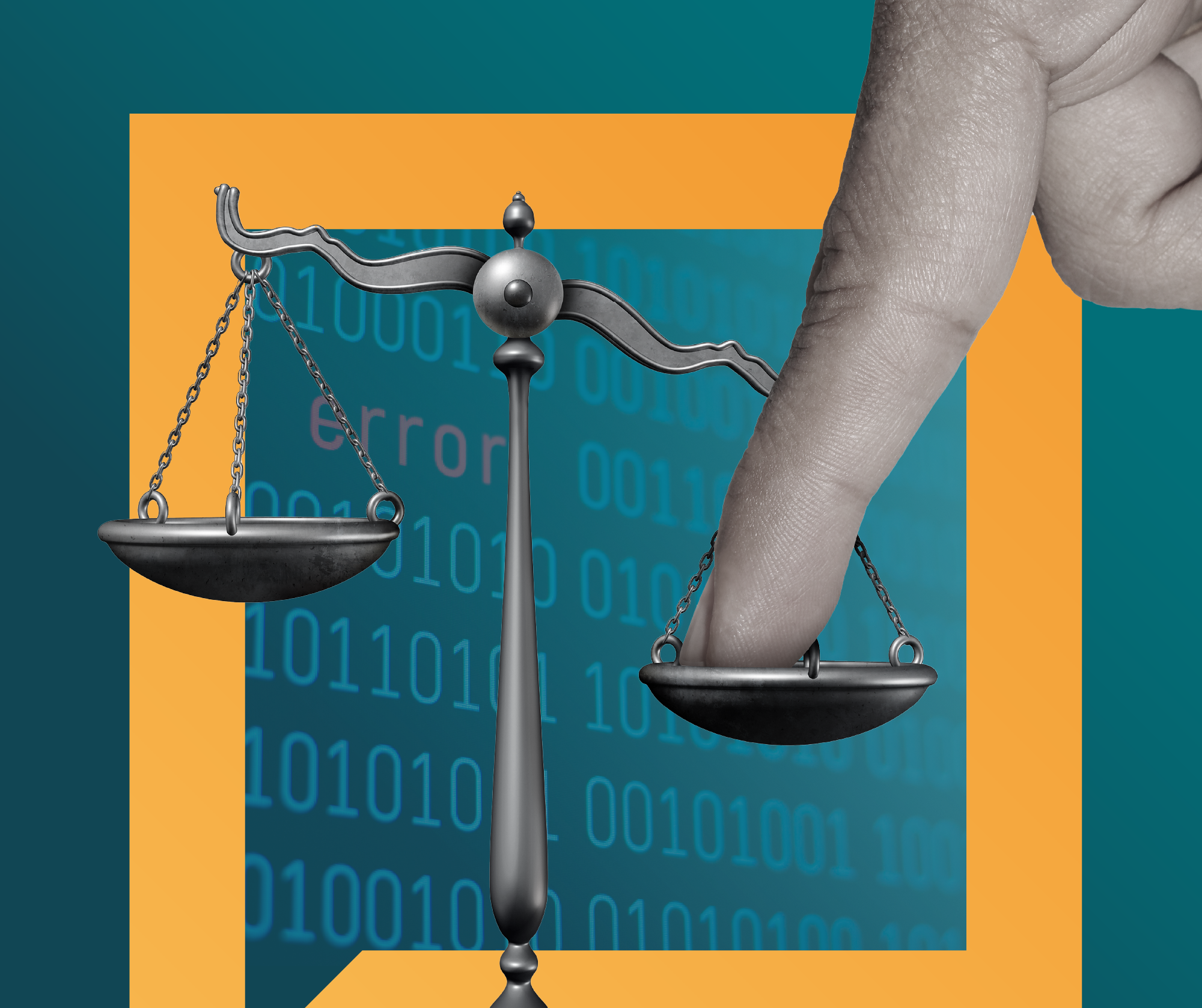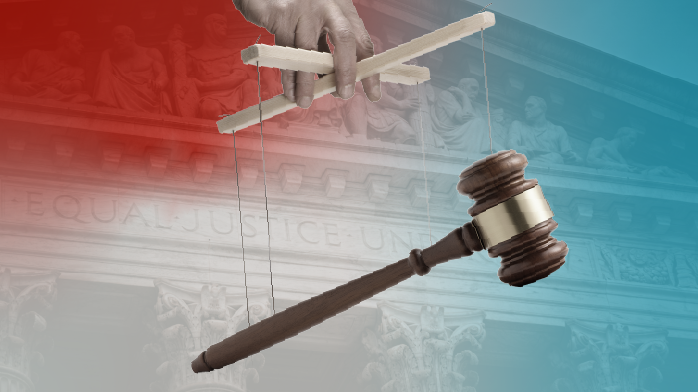
Thought Pieces / Aug 23, 2023
Supreme Distrust: How 'System-Is-Rigged' Thinking Implicates the Court

“Stop the steal.” “Tax the rich.” “Drain the swamp.” We have become inured to ideological taglines. But if we pause and reflect on the nature of these catch phrases, it becomes clear that they are rooted not (just) in politics, but in a deeper, “system-is-rigged” mindset that has been taking up a growing expanse of real estate in our collective conscience and public discourse.
While this mindset manifests in different ways along the political spectrum (e.g., “tax the rich” on the left versus “drain the swamp” on the right), the fundamental form of this cognitive script is shared: the idea that those in power are unfairly wielding it to enact a hidden agenda that disadvantages everyone else.
The idea itself is not new, but recent research from the Culture Change Project shows that there has been an expansion of “system-is-rigged” thinking in recent years. The mindset used to center on things like economic inequality and government spending but has now become a go-to explanation for almost all social problems—from reproductive rights to the criminal legal system. And, as of late, the list of people in power whom the mindset implicates now also includes the Supreme Court.
Distrust in the Supreme Court has been growing for years. Over the same period, the system-is-rigged mindset has strongly taken root, and now people are using that mindset to make sense of their suspicion of the Court. Although our research on public thinking about the Court does not (yet) take into account its most recent decisions—like the ruling against race-based affirmative action, and the decision to allow discrimination based on sexual orientation under the First Amendment—we anticipate that these sentiments will become even further entrenched.
In focus groups we conducted around the Dobbs v. Jackson decision, we found that people were thinking about Supreme Court Justices in the same way that they think of elected officials. They did not envision the Justices as neutral arbiters, but rather assumed they and their decisions are motivated by personal or political gain—just like other politicians that people largely understand to be corrupt and self-serving. Again and again, participants suggested the Dobbs decision wasn’t even really about abortion, but instead was yet another way that those in power are purposefully dividing Americans to advance a hidden agenda that disadvantages the public. Participants were generally unsure about what exactly this agenda was, but they were certain it was there and being implemented by the Court.
The system-is-rigged mindset is, in many ways, grounded in reality—from our nation’s roots in settler colonialism to present-day systems that knowingly perpetuate inequity (e.g., cash bail), the evidence is clear that our society is structurally unfair. The system-is-rigged mindset elucidates the ways in which the design of our society concentrates power with a few, to the disadvantage of the many. However, as advocates, scholars, activists, and communicators, it’s important to keep in mind the potential risks of this mindset and its growing dominance so that we can channel it in ways that are most likely to lead to productive change.
One of these risks is perhaps the most obvious: strategically misplacing the blame. Leaders and pundits on the political right have intentionally cued this mindset to convince their audiences that the people who are most advantaged by the system are people of color, and those harmed are predominantly “regular” (white) people. When a system-is-rigged mindset is activated in conjunction with racist or xenophobic mindsets, it becomes particularly dangerous. Because this mindset is a bit vague with regards to what “the system” is, who is rigging it, why or how they’re doing it, who is benefitting, and who is being harmed, progressive communicators must tell a full and complete story about who is rigging which systems, why, and how—particularly as this mindset continues to grow and evolve.
Another risk is attributing the rigging of the system to individual people pulling the strings, rather than to the design of the system itself. Because people generally have a fuzzy understanding of systems, there’s a tendency to focus on individual leaders as the problem. This applies to thinking about the Court, just like other parts of government—and as a result, people tend to think of the individual Justices as the problem, rather than recognizing how the design of the institution enables the Court to be unresponsive or to advance a partisan agenda rather than the public good. There is, of course, truth behind the need to hold individual Justices accountable for their decisions and character on and off the bench. But an over-reliance on this person-centric way of thinking leaves problematic institutions out of view. For instance, the public doesn’t associate problematic Court decisions with the nomination process or the lack of term limits—it’s the Justices themselves who are the problem.
Finally, it’s important to make sure the “system-is-rigged” story we tell is one that fuels action instead of fatalism—a sentiment that leads us to conclude that the problem is just too big to solve. For instance, the actions that might restore public trust in the Court’s legitimacy (e.g., reforms such as term limits and court expansion), will require precisely the collective action that can often be discouraged by this way of thinking. It’s not just that our systems are rigged—it’s that they are designed, and therefore can be redesigned to work better.
Although the dominance of this mindset presents challenges, it’s also an opportunity—particularly when it comes to shifting discourse about the Supreme Court. The fact that system-is-rigged thinking is so strongly in the foreground of Americans’ minds, and that it is now being used to make sense of the Court, provides progressive communicators with an important opening—a chance to tell a clearer, more complete story about how our judicial system was designed, and the need to redesign it in ways that are better aligned with the public good.
If pointed in the right direction, a shared understanding of why and how our systems are truly rigged—and what can be done about it—might be the first step toward “unrigging” them for the greater good.
Issues: Government and Democracy
Countries: United States